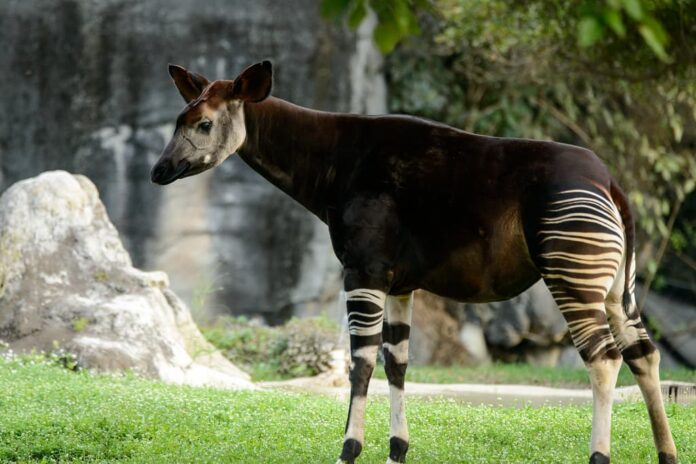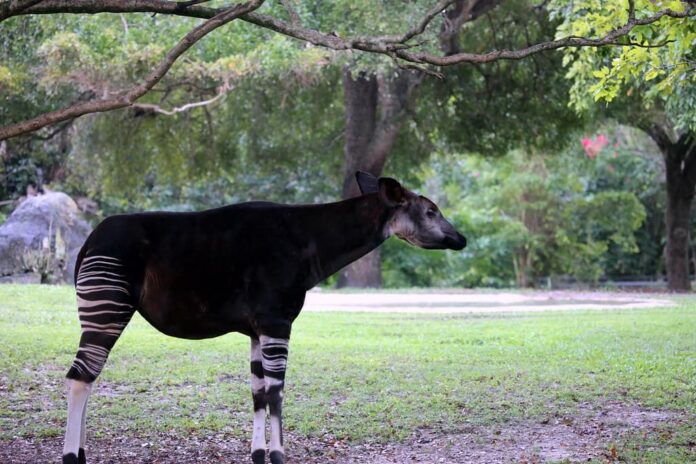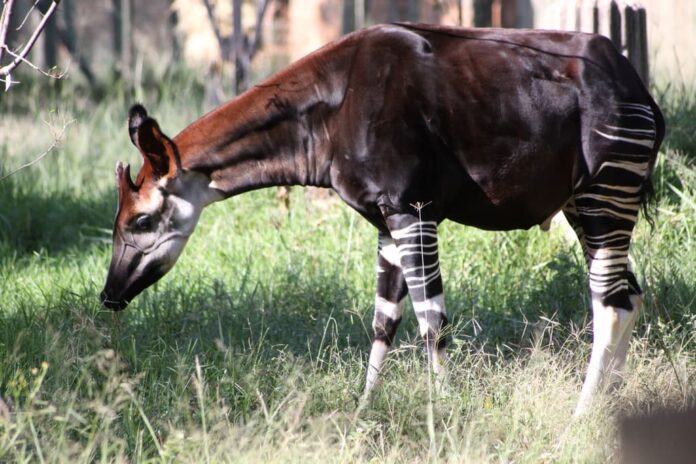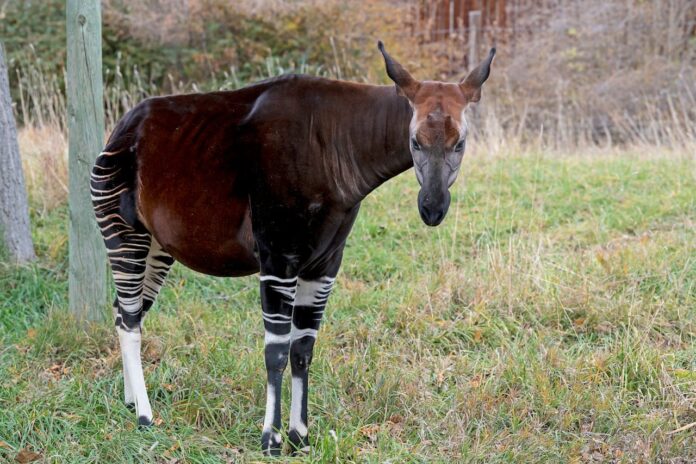Okapi looks like a cross between different animals, but it was born unique just like that. Many of us probably don’t know about them because these mammals are quite rare at some point. There are several fascinating things about okapis that you will find out about today. Feel free to take a read below, I think you will find them interesting as well.
1Appearance

As the closest and only living relatives to giraffes, okapis share a lot of common features with long-neck animals. Okapis do have elongated necks with long and dark tongues just like giraffes do. Their tongues are also super long, and an okapi can use its tongue to lick its own ears and eyelids. Male okapis, just like giraffes, males have short horns on their forests that are covered in the skin called Ossicones. As for females, they have knobby bumps instead of horns. Unlike tall giraffes, the average height of an okapi is only around 1.76 meters (5.8 feet).
If you take a look at their bodies, you can see the brown and white marks on their rump. Just like zebras, no two okapis have the same stripes and this is also how they use to recognize one another. The patterns also help the calves to follow their mother through the dark rainforests as well. On top of that, those marks are very important in helping them to camouflage in the forests. Plus with their large ears, an okapi can detect the sound around them with ease. This brings them incredible natural defenses against predation from humans and other animals.
Another cool thing is that okapis have thick and oily fur that keeps them dry when it rains. These elusive animals have slender legs, and the way they walk is also very similar to that of the giraffes. Both of them step with the same front and hind legs on each side rather than moving alternate legs like other ungulates. More than that, they use the scent gland that they have on each foot that leaves behind a tar-like substance. This is to mark their territory although their home ranges overlap from time to time.
2Behavior

Okapis are very shy animals, and they are also solitary as they prefer to live and venture on their own. Along with that, okapis are also very territorial due to the fact that the males mark their territory with urine. On some rare occasions, okapis would join together to eat in small groups then groom and play with each other. Adults okapis don’t vocalize much except when they are reading to breed during the mating season.
An okapi calve can walk 30 minutes after birth, and they become mature around 2 to 3 years. A female okapi is very protective of her young, and she will beat the ground with her hooves to ward off threats. The special thing about okapis is that the mothers can produce infrasonic calls to communicate with their calves while foraging. This sound is very useful in dense forests, and human ears cannot pick up that 14Hz sound at all. Apart from that, only the calves that use sounds like bleats, coughs, and whistles to communicate with one another, especially their mothers.
3Feeding & Habitat

Okapis are diurnal and herbivores, so they feed on more than 100 species of plants in where they live. These zebra-alike are active in the afternoon and evening when they search for food. Usually, an okapi feeds on buds, fern, fruits of trees, fungi, grasses, leaves, and twigs that they can find. It eats between 18 – 29 kilograms (40 – 65 pounds) of food every day. Okapis play an important role in the ecology of their native rainforests as they eat a variety of plants in the understory.
While giraffes live in open areas and the savannas, okapis are more elusive when it comes to their habitats. These shy animals are endemic to the Democratic Republic of Congo, and they live deep in the dense lowland rainforests. Okapis are also the cultural and national symbol of this country since it is one of the most distinctive and oldest animals there. Because they live so deep in the forests, it is almost impossible to observe and study one. This is also why okapis were known to be mythical creatures as African unicorns before their existence was confirmed.
4Predators & Threats

Living only in the deep forest of the Democratic Republic of Congo, their main and natural predators are leopards. Besides that, rainforest cats like the golden cats and servals also prey on the okapis sometimes.
Because okapis depend on the forests as sanctuary, deforestation is one of the main threats to their population. Logging and human settlement affect their habitats so much while people also hunt them. Other two main reasons are mining and poaching for their meat and skin. Okapis are now listed as Endangered on the IUCN Red List due to the rapid decline of their number. There only around 10,000 to 30,000 okapis left in the wild nowadays, and their home range is getting smaller.
Related Post: Things You Don’t Know About Yak




